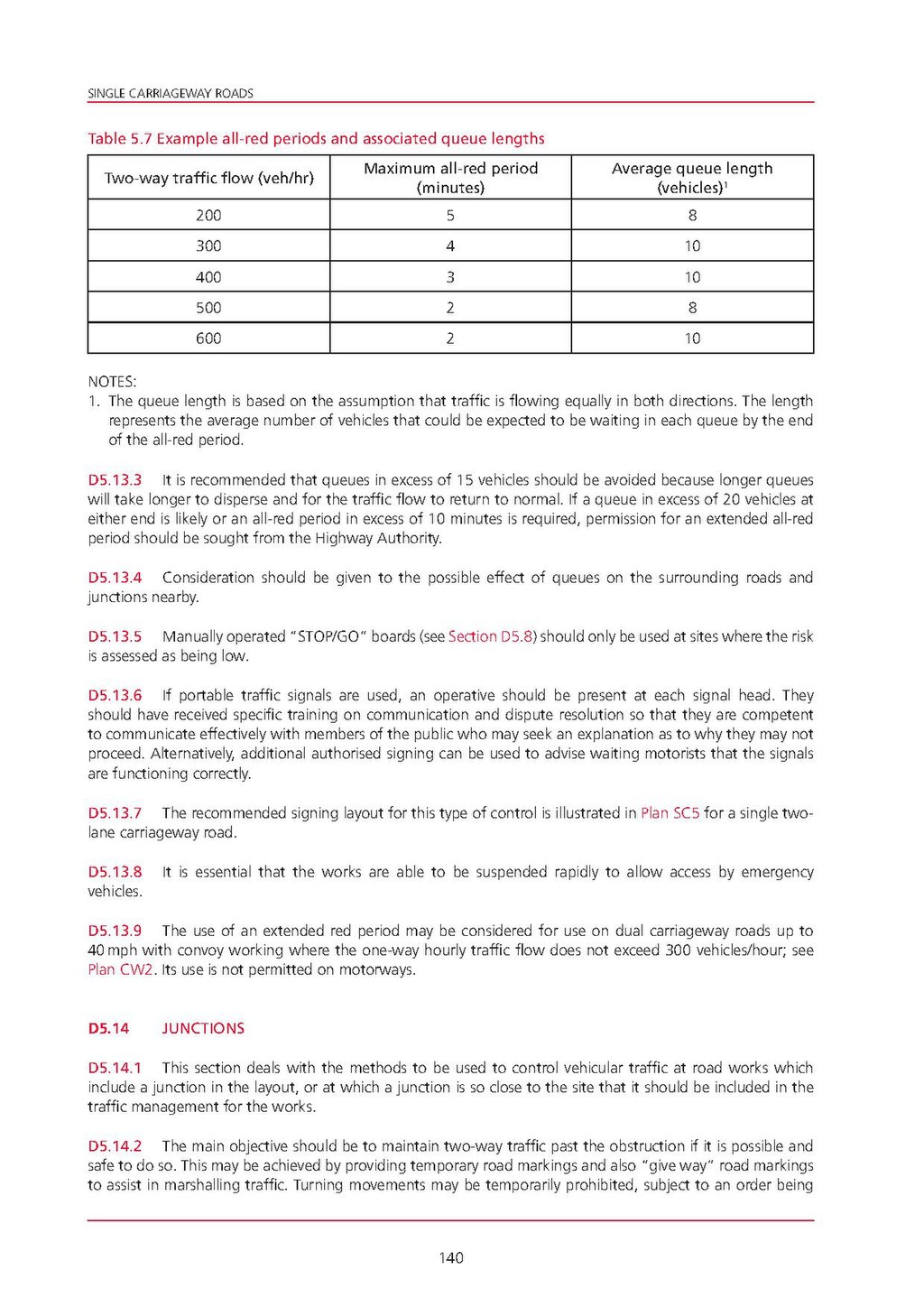| Two-way traffic flow (veh/hr) | Maximum all-red periods (minutes) |
Average queue length (vehicles)1 |
|---|---|---|
| 200 | 5 | 8 |
| 300 | 4 | 10 |
| 400 | 3 | 10 |
| 500 | 2 | 8 |
| 600 | 2 | 10 |
NOTES:
- The queue length is based on the assumption that traffic is flowing equally in both directions. The length represents the average number of vehicles that could be expected to be waiting in each queue by the end of the all-red period.
D5.13.3 It is recommended that queues in excess of 15 vehicles should be avoided because longer queues will take longer to disperse and for the traffic flow to return to normal. If a queue in excess of 20 vehicles at either end is likely or an all-red period in excess of 10 minutes is required, permission for an extended all-red period should be sought from the Highway Authority.
D5.13.4 Consideration should be given to the possible effect of queues on the surrounding roads and junctions nearby.
D5.13.5 Manually operated "STOP/GO" boards (see Section D5.8) should only be used at sites where the risk is assessed as being low.
D5.13.6 If portable traffic signals are used, an operative should be present at each signal head. They should have received specific training on communication and dispute resolution so that they are competent to communicate effectively with members of the public who may seek an explanation as to why they may not proceed. Alternatively, additional authorised signing can be used to advise waiting motorists that the signals are functioning correctly.
D5.13.7 The recommended signing layout for this type of control is illustrated in Plan SC5 for a single two-lane carriageway road.
D5.13.8 It is essential that the works are able to be suspended rapidly to allow access by emergency vehicles.
D5.13.9 The use of an extended red period may be considered for use on dual carriageway roads up to 40 mph with convoy working where the one-way hourly traffic flow does not exceed 300 vehicles/hour, see Plan CW2. Its use is not permitted on motorways.
D5.14JUNCTIONS
D5.14.1This section deals with the methods to be used to control vehicular traffic at road works which include a junction in the layout, or at which a junction is so close to the site that it should be included in the traffic management for the works.}}
D5.14.2The main objective should be to maintain two-way traffic past the obstruction if it is possible and safe to do so. This may be achieved by providing temporary road markings and also "give way" road markings to assist in marshalling traffic. Turning movements may be temporarily prohibited, subject to an order being
140
